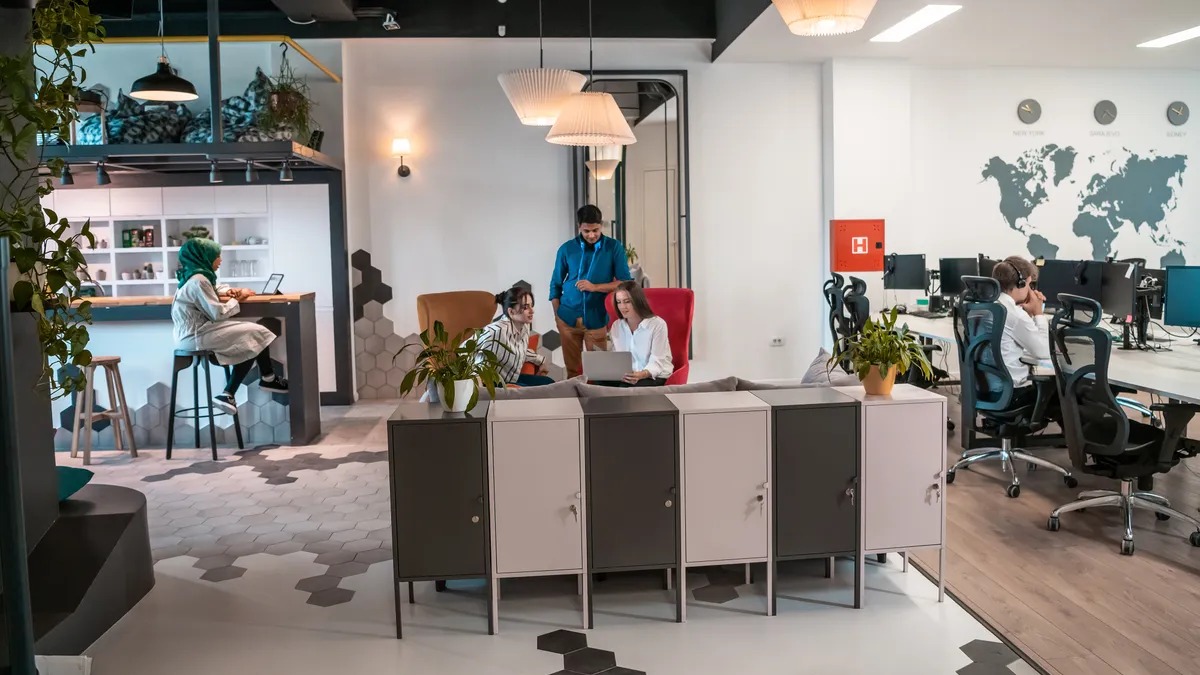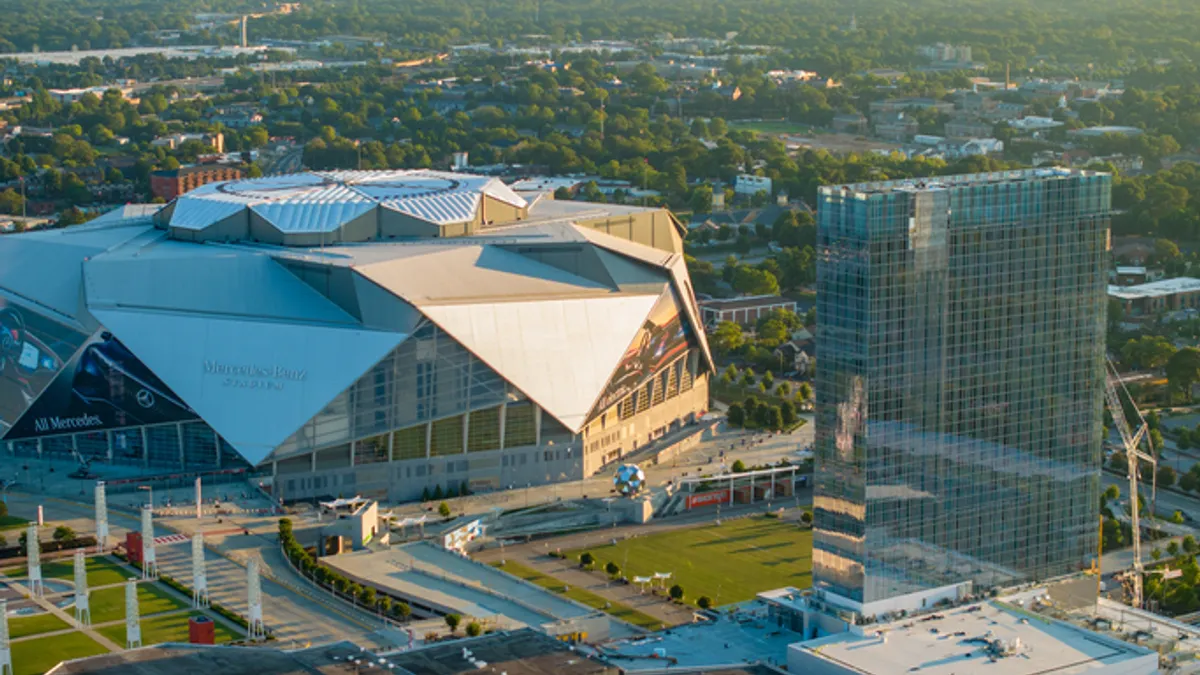Dive Brief:
- Facilities managers should consider repurposing and redesigning their spaces to accommodate employee workplace behaviors and new preferences for in-office work, according to VergeSense’s Occupancy Intelligence Index, which surveyed and analyzed more than 200 global enterprises in 2023.
- VergeSense found that for the companies it analyzed, collaborative spaces had a combined active time usage of 20.6%, compared with 8.4% for desks. Desks usually only serve as a home base or place for people to keep their belongings, the report states. Across the survey group, it found about three times as many desks as collaborative spaces.
- Due to this imbalance, the report suggests that facility managers consider transforming desk areas into more flexible, collaborative spaces or private spaces for video calls. “Most companies are not truly running out of space, instead the designs and mix of spaces they’ve provided are not meeting the new preferences for in-office work,” VergeSense said in the report.
Dive Insight:
Executives are increasingly pushing for more employees to return to the office. VergeSense’s Occupancy Intelligence Index shows capacity and peak capacity usage increased more last year than it had in previous years. But hybrid work schemes still dominate, with the index showing Tuesdays, Wednesdays and Thursdays having the highest average capacity usage.
While overall office utilization rates have steadily hovered just above 50% since Feb. 14, according to Kastle Systems’ Back to Work Barometer, VergeSense’s report says that it is “hearing an increased number of people claiming there isn’t enough space for them to be productive when they’re in the office.” The report says this discrepancy is due to incongruity between pre-pandemic space designs and new preferences for in-office work. Notably, it says, workspaces with a large percentage of desks relative to their overall space type mix have an opportunity to repurpose that space.
“If employees can’t guarantee they’ll be able to get their work done in the office because of insufficient space, they won’t come in. Providing the wrong space mix or not having enough available space hinders productivity and negatively impacts employee experience,” Brad Golden, VergeSense’s workplace insights lead and contributor to the index, told Facilities Dive.
What changes can be made to office design — and how much those changes cost — varies greatly. The index provided an example of a pharmaceutical and life sciences company that reduced one large conference room space to create smaller collaboration areas and increase the size of its lobby.
Golden gave the example of another company that only needed what he described as an easy technology upgrade to improve utilization of one of its conference rooms. He predicted more, similar data-informed decisions will occur this year.
To optimize office utilization, the report suggests that workplace operators conduct an audit based on hypotheses and measurements of capacity usage or active time usage within specific space types.
Subdividing large conference rooms might be worthwhile for many firms: VergeSense data found that, even though the average meeting size is fewer than two participants, 50% of conference rooms are designed for five or more people.
So far, facilities teams have leaned on more modular architectural solutions for that issue, Golden said. Large planter boxes and bookcases can be placed around open collaboration areas to create more privacy, for example. Large monitors have “dethroned the infamous [pingpong] table as the most desirable amenity” because the monitors can make an open layout more private, he said.
“2024 is going to be the year of making intelligent design decisions, and customers who leverage occupancy data and insights can make more informed and impactful design decisions,” Golden said.













